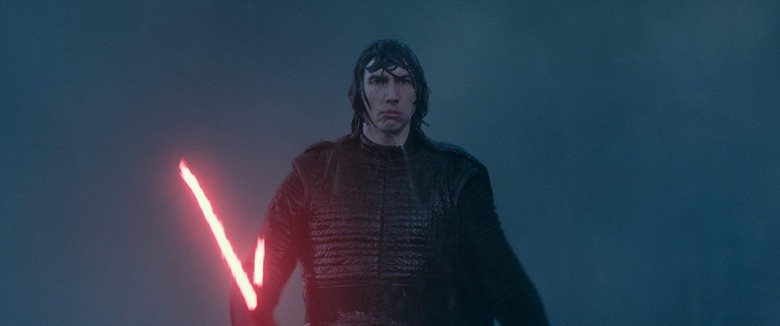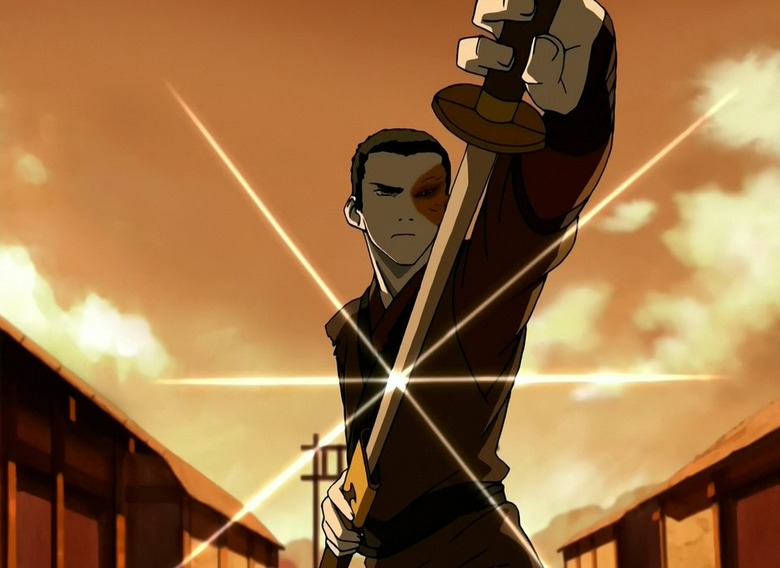How 'Star Wars: The Rise Of Skywalker' Failed Kylo Ren And What It Could Have Learned From 'Avatar: The Last Airbender'
A reluctant hero faces off against a looming evil empire that has taken over the world. A heroine that comes from an unassuming village rises to become one of the most powerful figures in the fight against evil. A villain with a facial scar wrestles with the forces of light and dark at war inside of him. But enough about Avatar: The Last Airbender.
The similarities between the masterful Nickelodeon animated show and Star Wars are apparent — both draw from classic hero's journeys and high-fantasy archetypes, with an undercurrent of east Asian mysticism. Another major element they share are dashing villains-turned-antiheroes. One of the driving narratives of Star Wars has been the question of redemption, especially in the new trilogy defined by the conflict between our champion of light, Rey (Daisy Ridley), and the villain she believes can be redeemed, Kylo Ren (Adam Driver). In Star Wars: The Rise of Skywalker, we see the culmination of the Skywalker Saga and the big question of whether the soul of Kylo Ren, born Ben Solo to Han Solo and Leia Organa before he was tempted by the Dark Side by Snoke, could be saved. And that answer ends up being immensely unsatisfactory and a major example of the failings of Star Wars: The Rise of Skywalker.
Spoilers for Star Wars: The Rise of Skywalker (and some of Avatar: The Last Airbender) are below.
From Kylo Ren to Ben Solo: Where it Went Wrong
We've seen Kylo Ren reject his chances at redemption time and time again in the past two Star Wars films, first when Han offers him an olive branch in The Force Awakens, to which he responds by killing his father in cold blood. The second time comes in The Last Jedi, when Kylo seemed to be becoming dissatisfied with his role as a shadow puppet for the First Order and a thankless henchman of Supreme Leader Snoke. Discovering a Force-connection between him and Rey, his shell begins to crack, and Kylo seems on the verge of turning back to the light. Instead, he unseats Snoke and becomes the new leader of the First Order.
But could Kylo come back from all actions — and the countless sins he's committed of killing his fellow Jedi students, slaughtering thousands with the Starkiller Base, and killing a bunch of supposedly Resistance-allied soldiers at the beginning of The Rise of Skywalker? There was a slim chance, especially for the numerous bodies that's he's accumulated. But the problem with the Star Wars films are that they deliberately distort that supposed body count — which you can find out the truth about in the supplementary material! A new Marvel comic from writer Charles Soule, The Rise of Kylo Ren, reveals that Ben Solo did not kill his fellow students during the events of The Last Jedi — instead, the temple mysteriously bursts into flames by some unseen force, with Kylo fleeing in a state of guilt into Snoke's arms. And his most heinous crime — Starkiller Base — was something he had no real involvement in, according to the script and novelization for The Force Awakens. These would all be well and good to building up to Kylo's ultimate redemption, if we saw any of it on the big screen.
Instead, all that offscreen development and internal conflict only serves to obfuscate what kind of person Kylo Ren is. He is seen as heartless and ambitious at worst, guilty at best — the latter of which is barely enough to turn into a full-fledged redemption. So in The Rise of Skywalker, when Kylo sheds his Kylo Ren persona and reverts back to Ben Solo after his mother Leia dies, the emotions ring false. He decides to turn back to the light because he's sad, I guess? It's made all the more confusing when the Force ghost he's confronted with after is not Leia but Han, the parent who he had killed with his own hands — an act that was admittedly wracked with guilt over ever since, and which had sent his mind into chaos. But the two events don't connect: Leia's death makes Ben rethink his path, but Han is the one who sets him back on the path toward good, and leads to Ben helping Rey defeat Palpatine.
Perhaps this turn would work better if we had a sense of Ben's familial life — something that he was shown to resent — but why, exactly? We never get a clear picture, and why both his parents' death is enough to send Ben back on the path toward good. But one of the biggest failings of The Rise of Skywalker is how it cuts that path short with Ben's death. In death, Ben never gets to atone for his sins, instead he is forever frozen in the final good deed he commits of sacrificing his life for Rey's. While he gets redeemed in Rey's eyes, and gives us that "rhyming" parallel that Abrams and George Lucas love to Darth Vader's "redemption," it's a trite resolution to a lifetime of misdeeds. Why should he repeat the mistakes of his grandfather, and like him, only get redeemed in death? Death absolves Ben of his mistakes and never gives him room for atonement — a far more interesting and compelling end for one of the most interesting and compelling characters of the series.
Why Avatar: The Last Airbender Gets It Right With Zuko
In Avatar: The Last Airbender, Prince Zuko of the Fire Nation is introduced as the blowhard villain with a hideous burn mark who is forever chasing after the Avatar, the reincarnated master of all elements — in this form a 12-year-old airbender monk named Aang. Like Kylo Ren, Zuko is an angry, turmoiled young man who is a puppet of the evil empire that threatens the balance of the world, prone to hotheaded outbursts and acts of violence.
But as the episodes wear on and the characters transcend their archetypes, Zuko gets the most amazing transformation. The layers are slowly peeled back: Zuko has been banished from his kingdom because he spoke out of turn, his facial scar given to him by his own father, Fire Lord Ozai (fittingly, voiced by Mark Hamill). His search for the Avatar is the only chance he has to return home and regain his rightful place on the throne. Zuko's backstory carries some differences from Kylo Ren — he comes from an evil family and tries desperately to live up to those standards — but they share some core elements. Zuko finds himself frequently having to prove his resolve in being a ruthless soldier of the Fire Nation, but his ideals always get in the way. And, like Kylo, he is forever trying to reconcile his own ambitions and wish to be accepted with the wartime horrors he witnesses.
The contrast that Abrams and co-writer Chris Terrio try to create between Rey and Kylo Ren — Rey seeking to become a champion of light despite her dark roots, Kylo Ren becoming a servant of the Dark despite his light origins — are played out entirely within Zuko in Avatar: The Last Airbender. It's revealed late in the series that Zuko's eternal inner conflict is a result of him coming from two bloodlines: that of the Fire Lord who first launched the conquest of the four nations, and that of the previous Avatar. The war between those two forces are forever waging within him, often resulting in Zuko passing out whenever he comes to a moral dilemma. But it's the perfect embodiment of yin and yang that Abrams and Terrio were trying and failed to execute in Rise of Skywalker.
But rather than simply being defined by his guilt and inner conflict as Kylo Ren is, Avatar: The Last Airbender goes out of its way to thrust Zuko into situations where he must come to term with his own violent actions. Zuko witnesses villages burned and families suffering under the Fire Nation's rule. He too makes his own mistakes and backslides, rejecting olive branches to turn back to the comfort of his power-hungry family. Which makes his slow and eventual turn back to the good side so much more rich and rewarding. Zuko works to atone for his sins, and does it through both self-sacrificial actions as well as heartfelt apologies. But the most striking difference between the two's redemption arcs, and why Kylo's fails where Zuko's does not, is that Zuko gets to live and fight on to atone for his sins. The battle never stops — and never should the fight for redemption.


